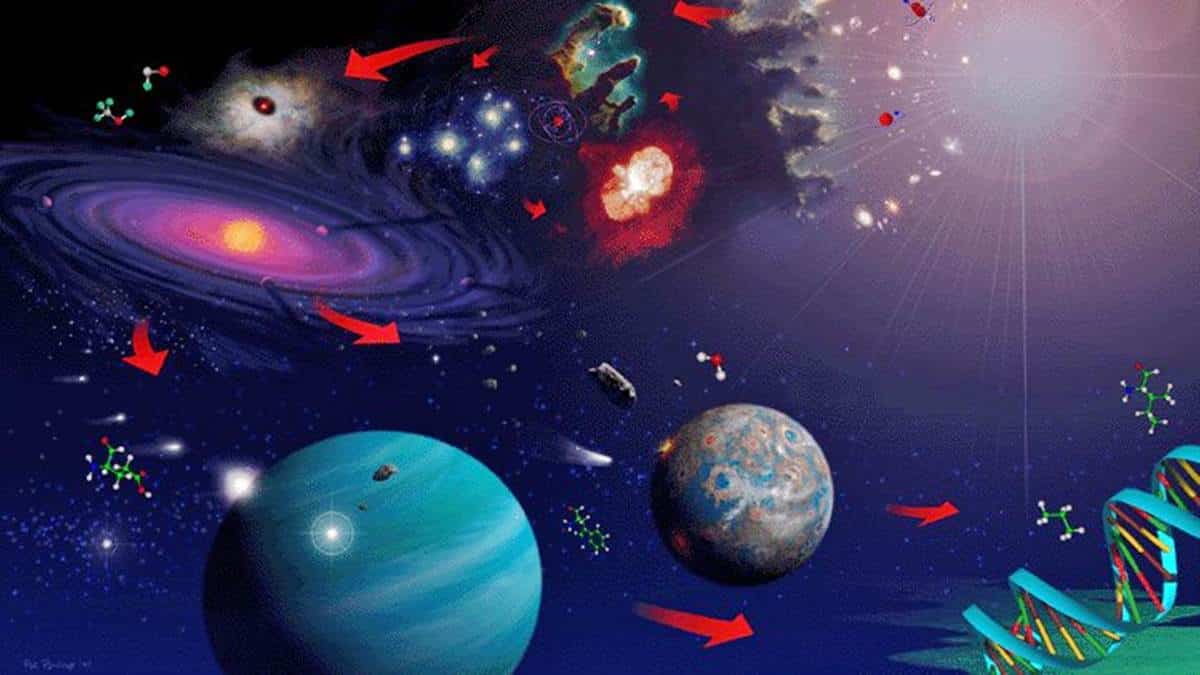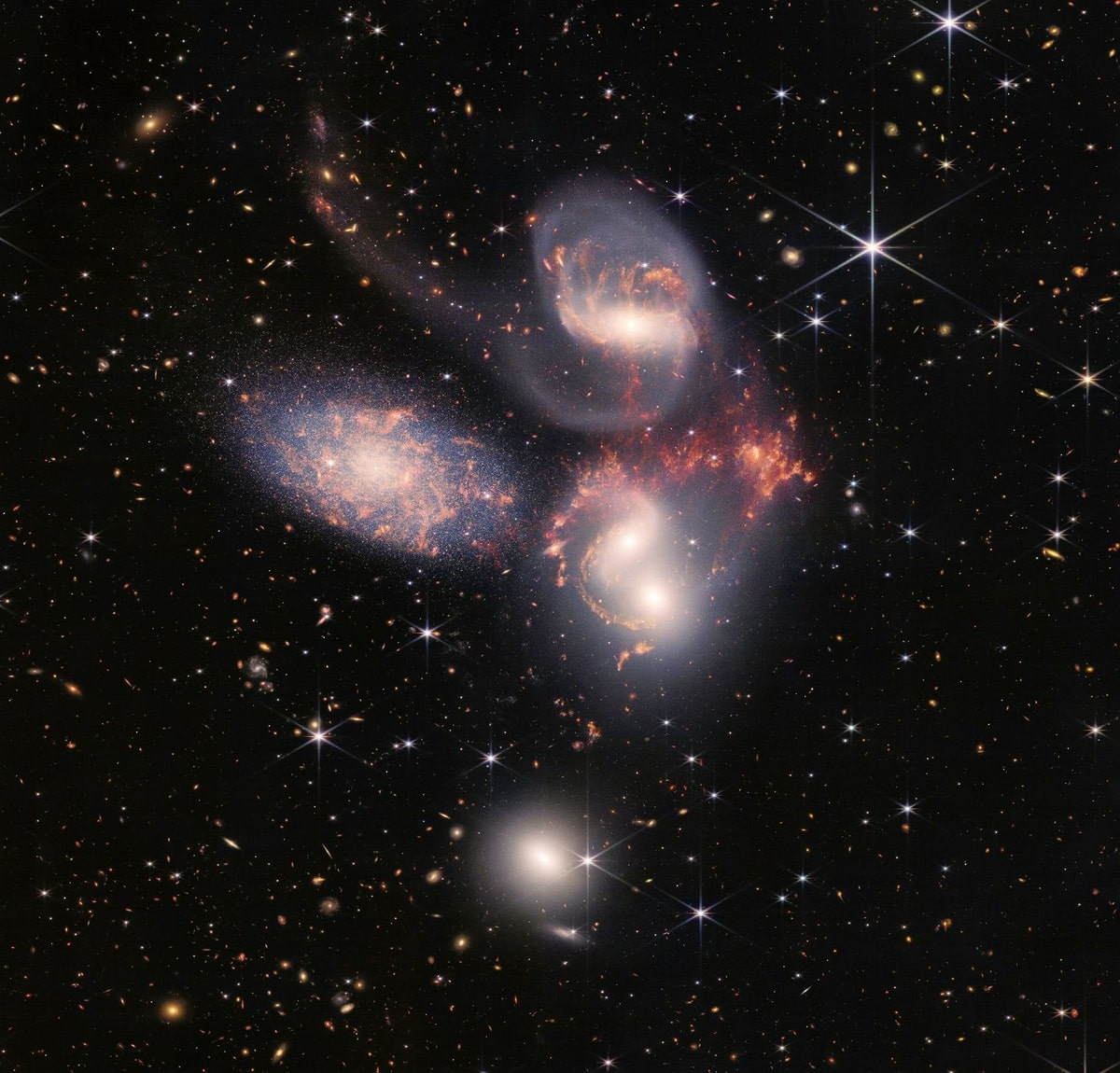
One of the most recurring questions that human beings have asked themselves throughout history is what color is the universe. Seeing the images in textbooks and so on, it is normal to think that the color of the universe is black. However, the reality is different.
In this article we are going to tell you what color the universe is, its characteristics and why it has that color.
Key features

The universe is defined as the sum total of various forms of matter, momentum, energy, and time and space. According to the big bang theory, the universe can be understood to be continuously expanding in three spatial dimensions (height, length, and depth) and the fourth dimension (i.e., time).
The universe is governed by constant physical laws. Many of these can be verified on Earth, while others are still under investigation or currently unknown. Distances in the universe are so great that they must be measured in light years. One light year is equal to the distance light travels in one year or 9.500 million kilometers.
The universe known so far is only a part of the entire universe because it can be infinite. But the visible or observable universe is finite, it contains all the energy and all the matter that has affected the entire universe since its creation.
The observable universe has established characteristics, which are:
- Based on observations, the observable universe is flat in appearance or shape.
- The universe is about the size of 46.500 billion light years and extends in all directions from Earth. It must be remembered that the planets are not the centers of the universe, but serve as viewpoints that delimit the observable universe.
Galaxies are celestial bodies, stars and cosmic matter that are concentrated in a region of space in response to gravitational force, corresponding to one unit in the entire universe. These can be classified into spiral galaxies, elliptical galaxies, irregular galaxies, and lenticular galaxies based on their shape. The universe is understood to be made up of 4% atoms, 23% cold dark matter, and 73% dark energy.
- Atom: Defined as the most fundamental and important particle of ordinary matter. Inanimate objects, the earth, organisms, and even humans are made of atoms.
- Dark matter: A type of matter that does not produce any electromagnetic radiation.
- Dark energy: it creates the pressure that causes the universe to expand at an accelerating rate. Although there is no experimental evidence for the existence of dark energy, it can explain the expansion motion in the universe in the Standard Model pertaining to cosmology.
Color of the Universe

The universe is a space full of unknowns, and the human being tries to answer. Until today's sun, little is known about its immensity, which raises more questions about the phenomena that occur inside it and the materials that compose it. Now, a simple but very old question can finally be answered: What color is the universe?
Science fiction movies and our own observations of the night sky can lead us to believe that it is black, or at least some very dark shades. Now the reality looks completely different.
The color of the Universe, this is what we have to find out first. The color of the Universe is not black. Ivan Baldry, a professor at the John Moores University Institute of Astrophysics (Liverpool, UK), explained to WordsSideKick.com that black isn't even a color. The reality is, black is simply "no detectable light."
In other words, as long as there is light, there is color: it changes according to the fluctuations of the light itself. In the universe, individual stars and galaxies constantly emit different waves of light, so the absence of color will never be a problem.
So, since the Universe is full of light, Karl Glazebrook, a professor at the Center for Astrophysics and Supercomputing at Swinburne University of Technology (Australia), together with Baldry and another group of colleagues, tried to determine the average color of the Universe.
How can we detect the color of the universe?

Simply, by measuring the waves of electromagnetic radiation they emit. Today we know that this group includes categories such as gamma rays, X-rays, ultraviolet, visible light, infrared radiation, microwaves and radio waves.
For the human eye, without the use of other tools, only visible light is perceptible because its wavelengths are the only ones that we can naturally capture. It is in this small wave of electromagnetic radiation that we find what we call "color."
So to determine what color the universe is, the first thing we need to do is measure the wavelengths of visible light emitted by stars and galaxies. Then, by creating a fusion of all of these, you can see the "average" color of the universe.
This sum of wavelengths is what Baldry and Glazebrook call the "cosmic spectrum." Through their 2002 survey, the so-called 2dF Galactic Redshift Survey, the team of researchers collected data from visible wavelength in more than 200,000 galaxies in the observable universe.
This is the largest effort to date to determine the color of the universe. Once a "map" is obtained showing the existing wavelength ranges, they can be averaged according to the CIE color space. Created in 1931 by the International Commission on Illumination, they are basically a measure of human visual ability under standard conditions.
What is the true color of the universe?
Once your data is obtained and your computer program is developed using the CIE color space, the data results of the algorithm are somewhat predictable. According to the researchers, the final color of the cosmic spectrum is light beige, an attempt to approach white.
Many name this color as the cosmic latte.
I hope that with this information you can learn more about the color of the universe of its characteristics.